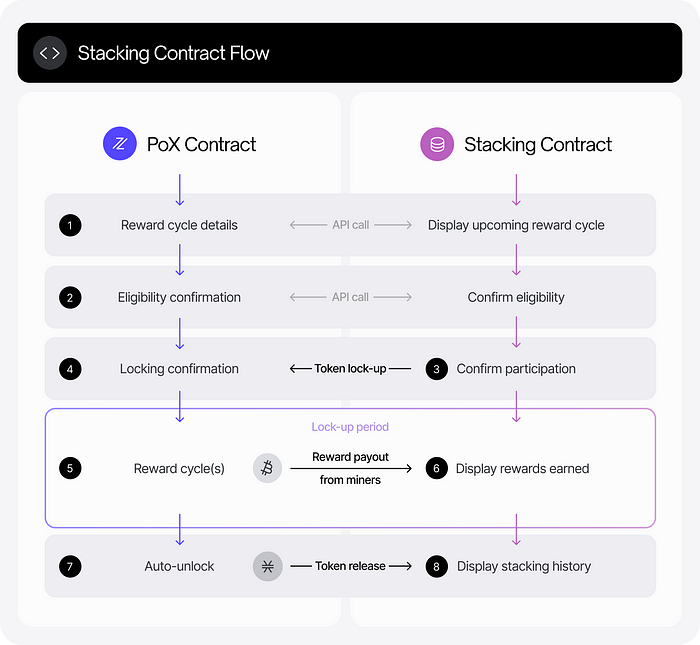The Stacks blockchain is connected to Bitcoin and brings smart contracts and dApps to it. Implementing a mining mechanism called proof-of-transfer (PoX), the Stacks chain connects to Bitcoin with a 1:1 block ratio, meaning that anything that happens on the Stacks blockchain can be verified on the Bitcoin Blockchain. The PoX consensus mechanisms relies on locking up (stacking) the native Stacks token STX to record and verify transactions.

Therefore, Stacks token holders can temporarily lock up their STX to support the security and consensus mechanism of the blockchain and obtain Bitcoin as a reward. This process is called Stacking.

Currently, there are$1,087,101,250 worth of STX stacked.*
*According to Staking Rewards
In order for STX holders to participate in stacking, they must lock up STX during the reward cycle (about 2 weeks) to run or support a full node. STX holders who actively participate in stacking through sending useful information to the network via STX transactions are rewarded in Bitcoin used during the cycle. This process can be viewed as a concept similar to proof-of-staking (PoS), but the difference is there is no economic penalty (slashing) that occurs on the protocol.
How do users participate in Stacking?
There are various avenues for users to participate in stacking, depending on the amount of STX users have and their experience level of using STX. Options include exchanges, pools, independent participation, and institutional use.
On an exchange:
Users can currently stack their STX on Okcoin.
This method is custodial, may distribute up to 10% APY with a 50 STX minimum, and has no fees.
In a pool:
Users who do not have a significant amount of STX can join existing pools with other users to create a collective pool that is large enough to run a node. Examples include Xverse, Friedger Pool, Planbetter, and Staked.
These methods are non-custodial, with STX minimums ranging from 50–100,000 STX, with fees ranging from 0–5%.
Individual participation*:
Users who have a significant amounts of STX can individually run a node and earn stacking rewards through Hiro Wallet for Desktop.
Hiro Wallet is non-custodial, distributes direct protocol APY with no fee. The minimum amount to stack individually will vary, based on the total supply of STX and the total amount of current participation. It is reported by Stacks blockchain nodes, but will never fall below 50,000 STX. Thei minimum for stacking STX can also be found at stacking.club. For more information, see the Hiro FAQ.
Hiro Wallet is non-custodial, and this method will directly distribute protocol APY with no fees.
Institutions and larger holders:
Institutional users and large holders may find their best options at BitGo or Prime by Coinbase. These options will directly distribute protocol APY.
*When participating in stacking in a pool or individually, the following information must be provided before stacking.
- Indication to the network how much STX should be locked up, and for how many reward cycles (approximately 2 weeks each)
- Indicate support for a particular chain tip.
- Specified Bitcoin address for receiving Stacking rewards.
Stacking Timeline
The stacking process follows a timeline of:
- 100 block preparation phase: Users participating in Stacking via Hiro Wallet for Desktop must enroll before the preparation phase begins.
- 2,000 block reward cycle: Users will have their STX locked and in a queue to receive rewards.
